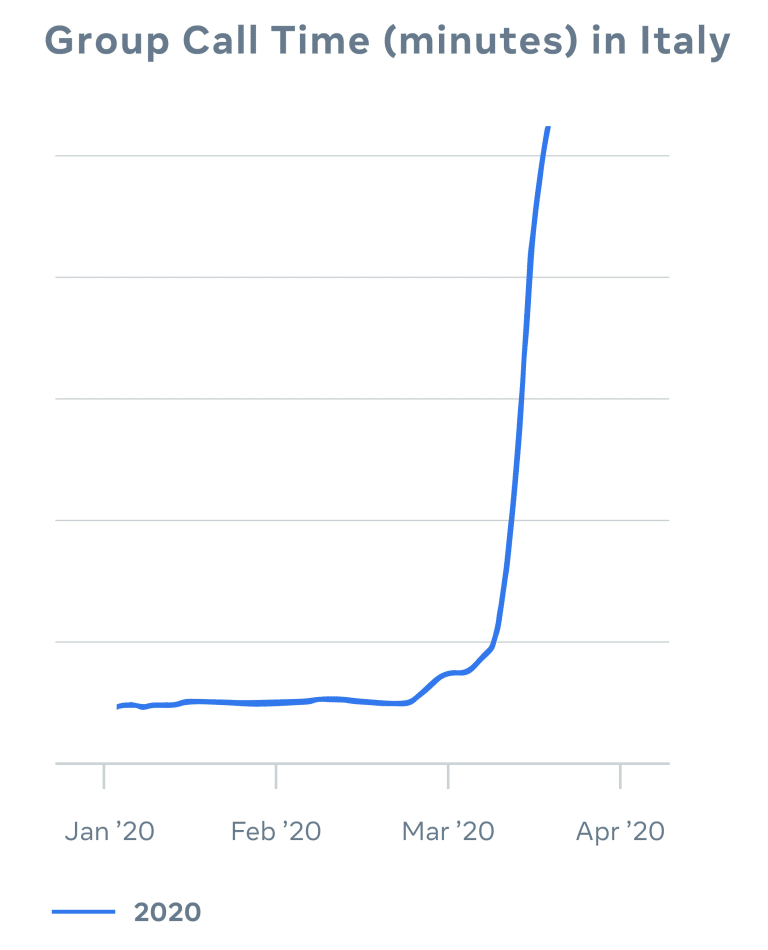
The COVID-19 worldwide pandemic has placed many people’s lives on hold. Some have been sent home, out of work, due to reduction in the workforce. Some have been ordered to work remotely until the outbreak abates. Many businesses, both large and small, have furloughed employees, reduced hours of operation, or closed entirely.
It is easy to panic during this trying and uncertain time, amid talks of a stagnant economy and a possible recession. Still, there are steps you can take to protect not only your small business but also your employees.
Table of Contents
Move All Marketing Efforts to Digital
According to Facebook, messaging usage has increased by 50% during the past month across its family of apps. Italy’s app usage increased by 70% and group call usage by a whopping 1,000%. People who are hunkering down at home flock to social media for entertainment. For this reason, it may be wise to move your marketing efforts to digital and advertise on spaces that most people are visiting, such as Facebook or Instagram. You may also want to concentrate your budget on Google Ads.

If you’re reducing your advertising budget, you can still use social media for your organic marketing campaigns. For example, you can use Facebook, Instagram, or Twitter to keep your customers informed of business updates, whether that’s regarding change in office hours or efficiency due to workforce constraints. Additionally, you can use email marketing to send notices of sympathy to customers, letting them know you are with them every step of the way during these uncertain times.
Defer Filing Federal Income Taxes
Because of COVID-19, the Treasury Department and Internal Revenue Service moved the tax filing due date to July 15, 2020. This change allows businesses to defer taxes past the original April 15 deadline without incurring late fees, penalties, or interests, regardless of the amount owed. Revenue may be slim at a time like this, and filing taxes closer to the July 15 date may save extra cash needed to maintain business operations.
Apply for Financial Aid, Loans, or Ad Credits
If money is currently an issue, it may be wise to apply to several grant and financial aid programs that will keep your business afloat during the COVID-19 pandemic. Here is a list:
Google Ad Credits: Google is giving $340 million in ad credits to small- and medium-sized businesses that have been advertising with the company since the beginning of 2019. Eligible businesses will receive an award notification in their ad accounts. These ad credits can be used at any point until the end of 2020.
Facebook Small Business Grant: Facebook is giving $100 million in cash and ad credits to businesses affected by the COVID-19 outbreak. The social media company plans to distribute the funds to 30,000 businesses in countries where it operates.
Facebook Newsroom Grant: Facebook is also giving $100 million in grant money to local newsrooms, as well as newsrooms from across the globe.
Yelp’s $25 Million Business Relief: Yelp is providing $25 million in relief services for nightlife businesses and local and independent restaurants. The relief comes in the form of free advertising, products, and services and waived advertising fees.
Economic Injury Disaster Loan: The SBA loan is granted to businesses struggling to overcome economic and revenue losses resulting from the COVID-19 pandemic. Small business owners can apply for a loan of up to $10,000. The program gives working capital loans of up to $2 million and does not require the loan advance to be repaid.
Paycheck Protection Program: This program helps employees keep their jobs. Small businesses and other organizations, like some nonprofits and independent contractors, may be eligible for the program, which offers loans of up to $10 million, loan payments deferred for six months, and partial loan forgiveness for businesses that maintain their workforce.
You can apply to numerous other programs, such as debt relief programs. See the extended list here.
Cut Unnecessary Expenses
A time like this may lead to slim wallets. To keep your business afloat, you may need to cut unnecessary expenses, including subscription services. You may be subscribed to an automation service such as Hootsuite or Meet Edgar; reports such as Emarketer or Statista; or data tools such as Ahrefs or BuzzSumo. Evaluate your spending, find areas that are not immediate needs, and cut unnecessary expenses.
Move Employees to Remote Work
With public spaces, recreational areas, and non-essential businesses closed, working remotely is now the new norm. To protect the health of your employees, place workers, if their jobs can be done virtually, on remote work. This vital step prevents the virus from spreading throughout your company. It also places your company in a positive light. After all, you don’t want to be that boss who orders employees to work on site even if that meant risking their lives.
Of course, when switching to remote work, send employees home with equipment that will help them succeed in working from home. Your employees may, for example, need to take their monitors to work more efficiently. They may also need office supplies, such as printing papers, pens, notebooks, or folders.
Granted, issues of productivity may come to mind when requiring employees to work from home. You can issue mandatory daily or weekly meetings on Zoom. If your employees are hourly workers, you can also order them to document their hours on Toggl.
Limit Number of On-Site Workers
Of course, not all jobs can be done from home. Some employees may be required to work on site. When requiring employees to work from the office, make sure to establish safety rules.
The CDC recommends that people, when in public spaces, keep themselves six feet away from strangers to prevent contracting the virus. Because the virus spreads through respiratory droplets, those who are in close proximity to strangers coughing or sneezing can become infected.
Businesses, such as grocery stores, now limit the number of people who can enter a building at a time. They also require people to stand in line six feet away as they wait to enter the premises. You, too, should employ the same protective measures by limiting the number of people who enter your building. You should also keep desks six feet away from one another, as recommended by the CDC.
If an employee falls ill, send that worker home.
Require On-Site Workers to Wear Masks
During the first three months of the pandemic, the CDC advised the healthy against wearing face masks, reserving them instead for healthcare workers, the sick, and the people caring for the sick. However, as of last week, the CDC requires the use of face masks while in public, whether that’s sending mail at the post office or going to the grocery store.
You, too, should require on-site workers to wear masks, especially if they are working in close proximity under the same roof. Additionally, put up informative posters about the ways they can protect themselves from spreading the virus.
To further protect employees from COVID-19 at work, you should also provide safety essentials on site, including hand sanitizers, hand soap, and disinfecting wipes. However, since these products are low in supply but high in demand, they may be stolen. Make sure to keep track of inventory.
Offer Services Online
With people social distancing and quarantining at home, fewer people are going out, limiting person-to-person contact. In fact, some industries are experiencing an increase in sales, including meal kits, which according to Emarketer has received an influx of requests from customers.
Now that most tasks are done virtually, it may help your business to pivot to digital. If you own a retail business, focus most of your efforts on e-commerce, offering customers easy ways to purchase online. If you host in-person classes, you may want to run online courses instead.
Find ways to offer services virtually so that a loss in foot traffic to your store will not lead to a loss of revenue.
Maintain Relationships with Customers
Loyal customers are vital at a time like this. As people cut spending to save money during a financially uncertain time, you will rely on long-term customers to maintain your business. Fostering trust and loyalty is a life-long process that should have started the moment you acquired that customer. Continue to maintain relationships with customers and find new ways to foster brand trust and loyalty.
